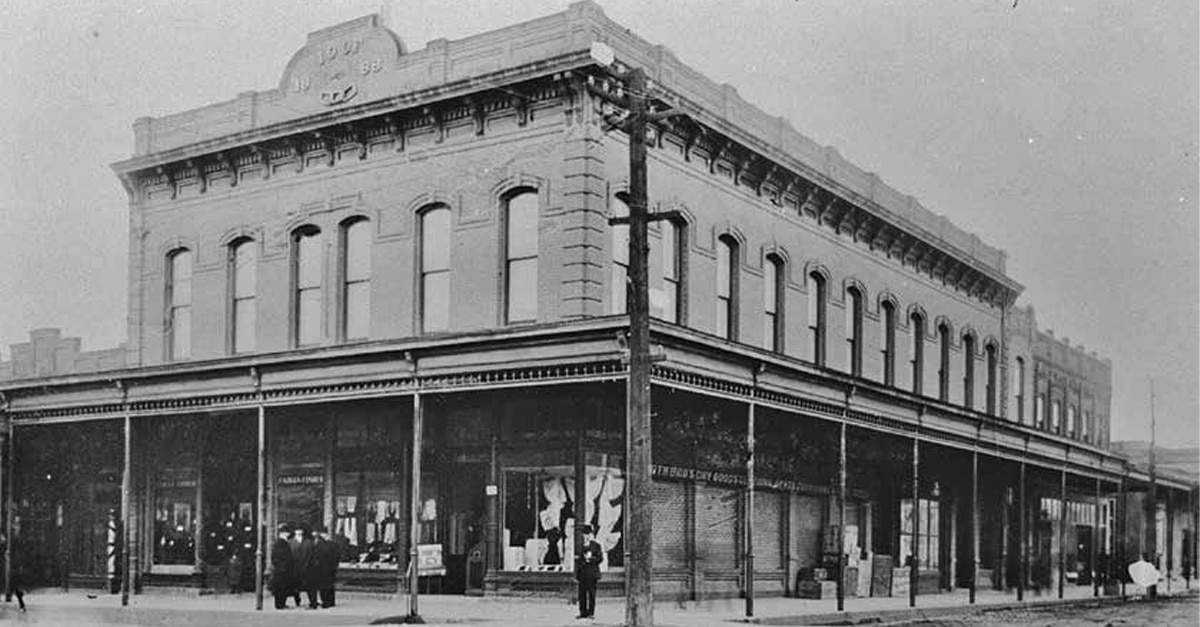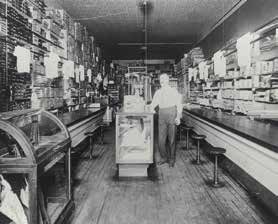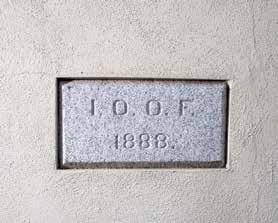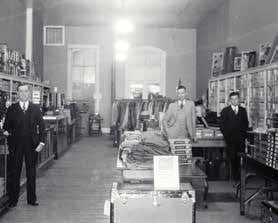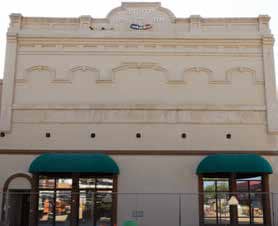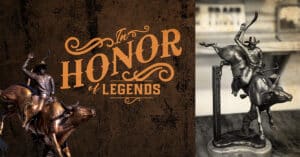Blending Old With New
The Independent Order of Odd Fellows in Downtown Redding…
One of Redding’s oldest buildings is part of the new mix of changes coming to downtown. The Independent Order of Odd Fellows hall at the corner of Market and Butte streets was built in 1888 when Redding’s commercial core was just a smattering of businesses along dirt streets. It was melded into The Mall in the 1970s and decades later became part of the openair Downtown Promenade. The IOOF building now begins the next chapter in its long history: community gathering space.
The ground floor will be available for meetings, presentations, poetry readings, pop-up art exhibits, webinars, small concerts and … well, pretty much whatever a community group might need an indoor place to accomplish. “I’m not going to limit what this space can be used for,” says Viva Downtown Executive Director John Truitt. “We want people to think about the space and what they want to do with it.”
The nonprofit, devoted to cultural, social and economic development in downtown Redding, is managing the building’s first floor for The McConnell Foundation. The philanthropic foundation purchased the Odd Fellows
hall for $400,000 in November 2018 from the IOOF Redding Lodge.
Community vitality is a focus area of the foundation, with downtown Redding the priority. The foundation is leading and partnering on projects to bring new retail, housing, walkways, bikeways, green spaces and other changes to downtown. It was thrilled with the opportunity to purchase the IOOF Hall – a flagship building in a key location, says Shannon Phillips, McConnell’s chief operating officer. “It’s a solid, beautiful building with great architecture,” she says.
“It adds rich character to a community when you blend the old with the new.” The Odd Fellows hall is the oldest brick building in downtown Redding. Its original red-brick identity is hidden under a layer of stucco, as are arched windows on the second floor.
The building was celebrated as a point of pride when completed in 1888. IOOF was popular and powerful in that era. Many civic leaders and politicians were members. The fraternal organization provided charitable services in a time when government social programs didn’t exist. IOOF commands were “to visit the sick, relieve the distressed, bury the dead and educate the orphan.”
Redding’s new IOOF building got statewide attention in 1900 when the Redding Lodge hosted the Grand Encampment of the Independent Order of Odd Fellows of California. Some 500 visitors arrived. The city’s population was only 2,940.
“To accommodate the biggest crowd the town has ever attempted to entertain, every residence in Redding has been thrown open to provide sleeping quarters for the guests,” the San Francisco Call reported.
A temporary arch over Market Street was festooned with IOOF emblems and hundreds of lights. “Redding presents the most beautiful appearance in all its history,” the San Francisco Call declared.
The IOOF building was designed for dual duty – the upstairs for lodge activities and the ground floor for retail space to generate income for the lodge.
The McConnell Foundation doesn’t yet have a plan for the upstairs, Phillips says. That portion of the building has a frozen-in-time feel. There are high ceilings with embossed tinplate tiles, a large meeting room and the Odd Fellows insignia of the all-seeing eye and three-link symbol representing friendship, love and truth on one wall.
The ambiance is contemporary on the ground floor, which has seen many changes over the decades. One of the first businesses in the space was Firth Brothers (later Mark Firth Company), offering an eclectic jumble of merchandise from the 1890s to 1944.
“The stock was placed in big boxes stacked from floor to ceiling and the clerks would climb ladders that rolled on tracks … Horace Firth sat on a platform in the middle of the store so he could watch everybody,” recalled Mabel Frisbie in Shasta Historical Society’s 1972 Covered Wagon.
Thompson’s Clothing Store began its 80-year run in 1926 in the IOOF building. A compounding pharmacy was a more recent tenant. Its laboratory-type workstations and two utility sinks remain. Viva Downtown kept the configuration to see if community groups are interested in using it for activities.
The contract for Viva Downtown to manage the 3,800-square-foot lower level of the building was finalized late last year. The organization then cleaned, painted, installed a large-screen TV, established a WiFi connection and defined areas for small conferences and presentations. The COVID-19 pandemic put a pause on the action, but Truitt hopes to soon bring in community organizations to tour the space and imagine how it might be put into play.
Groups will be able to use areas for no cost or low cost, Truitt says. “I’m pretty stoked about the possibilities,” he says. “I’m really looking forward to what happens next.”
Viva Downtown • www.vivadowntownredding.org

